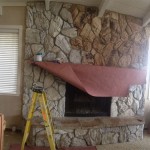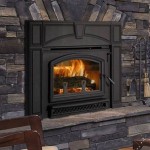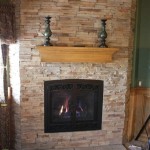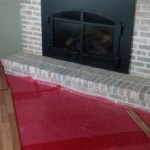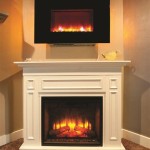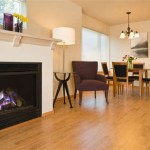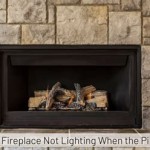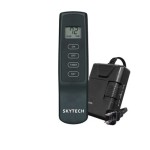Wall Switch Troubleshooting for Gas Fireplaces
A gas fireplace provides warmth and ambiance, often ignited with the simple flip of a wall switch. When this switch fails to function, the convenience and aesthetic appeal of the fireplace are significantly diminished. Determining the cause of the problem requires a systematic approach, considering various potential points of failure within the fireplace and its control system. A homeowner can, and should, troubleshoot most problems. However, if problems become too complex, or involve gas, a qualified technician should be contacted.
Initial Checks: Power and Basic Functionality
The first step in troubleshooting a non-responsive wall switch involves confirming power and basic functionality. This includes verifying that the circuit breaker controlling the fireplace is not tripped. Locate the electrical panel in the home and check the breaker labeled “fireplace” or any related designation. Reset the breaker by flipping it to the “off” position and then back to the “on” position. Even if the breaker appears to be in the “on” position, a brief cycling of the breaker can sometimes resolve a tripped state that is not immediately obvious.
Next, inspect the wall switch itself. While aesthetically simple, internal components can fail over time. Ensure the switch is mechanically sound and moves freely between the “on” and “off” positions. If the switch feels loose or sticky, it may indicate a faulty switch requiring replacement. A visual inspection of the switch faceplate can also reveal signs of damage, such as cracks or discoloration, suggesting potential internal issues. Check the electrical wiring located at the back of the wall switch. If the wires appear to be loose or disconnected, tighten them after shutting off the breaker, or re-connect them.
Confirm the gas supply to the fireplace. Although the wall switch controls the electrical ignition, the fireplace cannot function without gas. Check the main gas valve that supplies the fireplace. This valve is usually located near the fireplace itself or along the gas line leading to it. Ensure the valve is fully open. If the valve is partially closed or obstructed, it can restrict gas flow, preventing the fireplace from igniting. If the gas supply is supplied by a propane tank, check the tank levels.
Examine the fireplace's pilot light. Some gas fireplaces feature a standing pilot light, which must be lit for the fireplace to operate. If the pilot light is extinguished, the wall switch will not initiate ignition. Follow the manufacturer's instructions to relight the pilot light. These instructions are typically found on a label near the pilot light assembly. If the pilot light repeatedly goes out, it may indicate a problem with the thermocouple or gas pressure, requiring professional attention. If no pilot light is present, move on to testing the igniter.
Examining the Fireplace Control Module and Wiring
The fireplace control module, often referred to as the control board or valve assembly, is the central processing unit of the fireplace. It receives the signal from the wall switch and activates the ignition sequence. Problems with the control module or its associated wiring can prevent the fireplace from responding to the wall switch.
Locate the control module, typically housed within the fireplace enclosure. Consult the fireplace's user manual for specific location details. Once located, visually inspect the module for any signs of damage, such as burnt components, loose connections, or corrosion. If any visible damage is present, the control module may require replacement. Make sure the breaker is off to the fireplace. Disconnect the power supply to the control module before inspecting the wiring. Use a multimeter to check continuity of each wire.
Trace the wiring from the wall switch to the control module. Look for any breaks, crimps, or loose connections in the wiring. Use a multimeter to test the continuity of the wires. Disconnect the wires at both ends (wall switch and control module) before testing. A lack of continuity indicates a broken wire that needs to be replaced. Check the connections at both the wall switch and the control module. Ensure the wires are securely connected to the terminals. Loose connections can cause intermittent or complete failure of the system.
The wall switch typically sends a low-voltage signal to the control module. Use a multimeter to measure the voltage at the control module when the wall switch is in the "on" position. If no voltage is present, the problem may lie with the wall switch or the wiring between the switch and the control module. Refer to the fireplace's wiring diagram to identify the correct terminals for voltage measurement.
The control module relies on various sensors and safety devices to ensure safe operation. These devices include flame sensors, thermistors, and pressure switches. A malfunctioning sensor can prevent the control module from initiating ignition. Consult the fireplace's user manual for information on testing these sensors. A professional technician may be required to accurately diagnose and replace faulty sensors. Before concluding that the control module is faulty, ensure all other components are functioning correctly. Replacing the control module can be an expensive repair, so it's important to rule out other potential causes first.
Addressing Common Ignition System Issues
The ignition system is responsible for creating the spark that ignites the gas in the fireplace. Several components contribute to the ignition process, including the igniter, the spark module, and the gas valve. Problems with any of these components can prevent the fireplace from igniting. There are two common ignition systems: piezoelectric and electronic.
Piezoelectric systems use a mechanical action, such as pushing a button or turning a knob, to generate a spark. Check the piezoelectric igniter for proper function. Press the igniter button to see if a spark is visible at the burner. If no spark is present, the igniter may be faulty and need replacement. Electronic ignition systems use a spark module to generate the spark. Listen for a clicking sound when the wall switch is turned on. The clicking sound indicates that the spark module is attempting to generate a spark. If no clicking sound is heard, the spark module may be faulty.
Examine the electrode, which is the metal rod that delivers the spark to the gas burner. Ensure the electrode is clean and free from corrosion. Clean the electrode with a fine-grit sandpaper or steel wool. Check the gap between the electrode and the burner. The gap should be within the manufacturer's specifications. Adjust the gap if necessary. The electrode can become misaligned over time, preventing the spark from igniting the gas.
The gas valve controls the flow of gas to the burner. Ensure the gas valve is opening properly when the wall switch is turned on. Listen for a clicking sound from the gas valve when the switch is activated. The clicking sound indicates that the valve is opening. If no clicking sound is heard, the gas valve may be faulty. Use a multimeter to test the solenoid on the gas valve. The solenoid is an electromagnet that opens the valve when energized. If the solenoid is not receiving power, the gas valve will not open. Check the wiring to the solenoid for any breaks or loose connections. The solenoid may require replacement if it is faulty.
The flame sensor detects the presence of a flame and allows the gas valve to remain open. If the flame sensor is not functioning properly, the gas valve may close prematurely, causing the fireplace to shut off. Clean the flame sensor with a fine-grit sandpaper or steel wool. If the flame sensor is still not working properly, it may need to be replaced. The flame sensor is typically located near the burner assembly.
Proper ventilation is crucial for the safe and efficient operation of a gas fireplace. Ensure the vents are clear and free from obstructions. Blocked vents can cause a buildup of carbon monoxide, which is a dangerous and potentially deadly gas. Inspect the venting system for any signs of damage, such as cracks or leaks. If any damage is present, the venting system should be repaired or replaced by a qualified technician. Proper venting ensures adequate airflow and prevents the buildup of harmful gases. Poor ventilation can also affect the ignition process, making it difficult for the fireplace to light.

Gas Fireplace Wall Switch Faq Montigo

The Main Burner Flame Will Not Come On Or Stay Www Mygasfireplacerepair Com

Gas Fireplace Has Embedded Switch Rather Than Wall How Do I Get To It Doityourself Com Community Forums

Creating A Smart Fireplace Switch With Sy Relay Hometecher
How To Fix A Gas Fireplace That Won T Light Reliably When It Is Operated By Switch On The Wall Quora

Gas Fireplace Wall Switch Faq Montigo

Smarten Up Your Gas Fireplace This Winter The Digital Media Zone

Gas Fireplace Wall Switch Faq Montigo

3 Simple Steps To Turn On A Gas Fireplace With Wall Switch

How To Test Your Thermopile Www Mygasfireplacerepair Com

